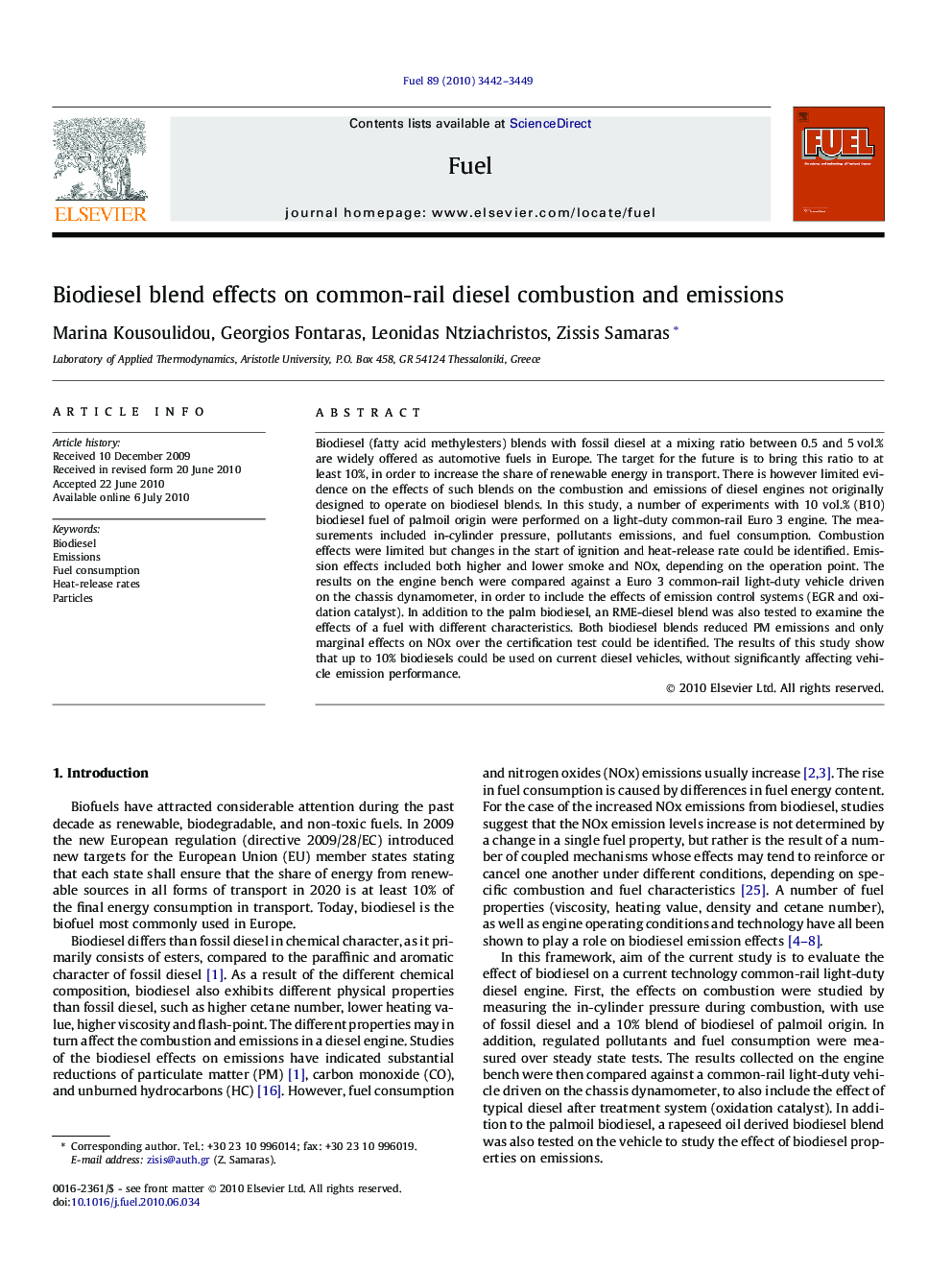| Article ID | Journal | Published Year | Pages | File Type |
|---|---|---|---|---|
| 206861 | Fuel | 2010 | 8 Pages |
Biodiesel (fatty acid methylesters) blends with fossil diesel at a mixing ratio between 0.5 and 5 vol.% are widely offered as automotive fuels in Europe. The target for the future is to bring this ratio to at least 10%, in order to increase the share of renewable energy in transport. There is however limited evidence on the effects of such blends on the combustion and emissions of diesel engines not originally designed to operate on biodiesel blends. In this study, a number of experiments with 10 vol.% (B10) biodiesel fuel of palmoil origin were performed on a light-duty common-rail Euro 3 engine. The measurements included in-cylinder pressure, pollutants emissions, and fuel consumption. Combustion effects were limited but changes in the start of ignition and heat-release rate could be identified. Emission effects included both higher and lower smoke and NOx, depending on the operation point. The results on the engine bench were compared against a Euro 3 common-rail light-duty vehicle driven on the chassis dynamometer, in order to include the effects of emission control systems (EGR and oxidation catalyst). In addition to the palm biodiesel, an RME-diesel blend was also tested to examine the effects of a fuel with different characteristics. Both biodiesel blends reduced PM emissions and only marginal effects on NOx over the certification test could be identified. The results of this study show that up to 10% biodiesels could be used on current diesel vehicles, without significantly affecting vehicle emission performance.
